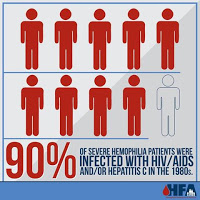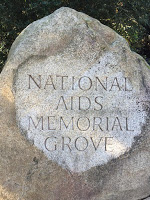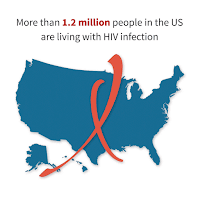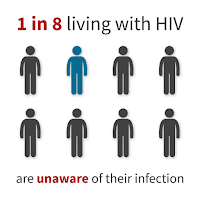1,752
 |
| “Get out!” |
The threat of HIV to those with hemophilia was made vividly clear in September 1987. On August 21, 1987, two weeks before my son with hemophilia was born, the Ray brothers had been fire-bombed from their trailer park home in Arcadia, Florida–a warning to the family to leave. It made headlines nationwide and was considered a landmark act in the history of HIV in the US. The story was of shocking interest to everyone, even those of us who didn’t know hemophilia was about to enter our lives.
 I still have my copy of People magazine, which had a story on it. Two weeks later, my son was diagnosed and a chill went through me. He was lucky to have just missed the window for contracting HIV through contaminated blood products. But there was national hysteria, misunderstanding about HIV transmission, and paranoia.
I still have my copy of People magazine, which had a story on it. Two weeks later, my son was diagnosed and a chill went through me. He was lucky to have just missed the window for contracting HIV through contaminated blood products. But there was national hysteria, misunderstanding about HIV transmission, and paranoia.
There are now fantastic drugs available now that can treat HIV and prolong the lives of those who have it. So much public education has been done to alleviate ignorance and the spread of the virus. From 2005 to 2014, the annual number of new HIV diagnoses declined 19%. And December 1 is World AIDS Day, to remember those who died as a result of this insidious virus. The US hemophilia community alone lost an estimated 10,000 with hemophilia, and this doesn’t include the spouses who were infected. Ten thousand people made up half of our community at the time.


World AIDS Day remembers those who died, and a ceremony was held at the National AIDS Memorial Grove in San Francisco. Both HFA and NHF were honored to have been invited to participate.
http://www.aidsmemorial.org/
World AIDS Day also serves to remind us that the work is not yet done. I was reading Time magazine on a plane ride yesterday, and was shocked at the statistics I read.
- In 2015, 39,513 people were diagnosed with HIV infection in the United States.
- More than 1.2 million people in the US are living with HIV, and 1 in 8 of them don’t know it.
- Gay and bisexual men accounted for 82% (26,375) of HIV diagnoses among males and 67% of all diagnoses.
- Black/African American gay and bisexual men accounted for the largest number of HIV diagnoses (10,315), followed by white gay and bisexual men (7,570).
- Heterosexual contact accounted for 24% (9,339) of HIV diagnoses
- Six percent (2,392) of HIV diagnoses in the United States were attributed to injection drug use (IDU).
- Louisiana has the second highest new-infection rate: due to poverty, large incarcerated population, stigma, abstinence-only sex ed (CDC data, Time magazine, Nov 28-Dec 5, 2016)
- Miami: cuts in health spending contributed to a 23% rise in those with HIV since 2004, the fastest-growing rate of infection in US. (CDC data, Time magazine, Nov 28-Dec 5, 2016)
World AIDS Day is an important day for two reasons: to remember the loved ones we lost, and to remind a sometimes still ignorant or risk-taking public that HIV still lives among us, is transmitted through unprotected sex or shared needles with someone who has it (and you cannot tell by looking who has it), and that there is no cure. The hemophilia community warriors have from day 1 led the charge for a safer blood supply, safer blood products, and greater information about HIV/AIDS.
Read: And the Band Played On by Randy Shilts, Dying in Vein by Kathy MacKay
Note: The spread of HIV in the US was originally blamed on a gay French Canadian flight attendant, Gaetan Dugas, but new analysis of stored blood samples have exonerated him of this. And the Band Played On opens with Dugas’s story and alleged link as Patient Zero.
Note: The spread of HIV in the US was originally blamed on a gay French Canadian flight attendant, Gaetan Dugas, but new analysis of stored blood samples have exonerated him of this. And the Band Played On opens with Dugas’s story and alleged link as Patient Zero.


